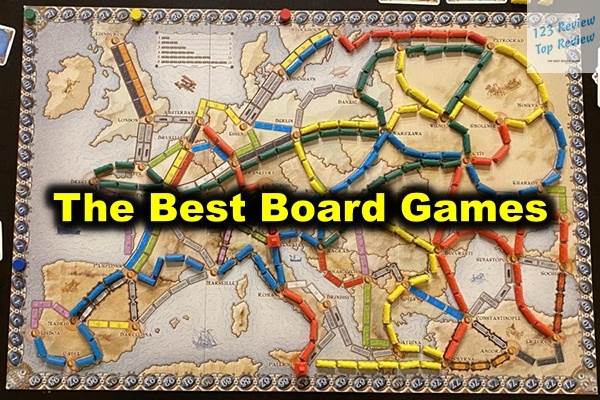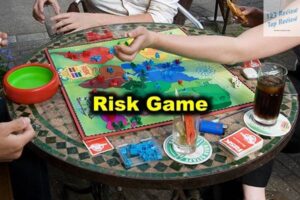Whether you’re seeking a fun activity for family game night, a strategic challenge to test your wits, or a cooperative experience to bond with friends, there’s a board game tailored to your needs.
In this article, we’ll explore the best board games on the market, focusing on different audiences, the critical elements that make a game stand out, and how these games compare with others in their genre.
Board Games for Different Audiences
The diversity in board games today means there’s something for everyone. However, selecting the right game often depends on who’s playing. Here, we’ll break down some top board games by audience type, ensuring you find the perfect match for your group.
Family-Friendly Games
Family-friendly board games are designed to be inclusive, providing enjoyment for players of all ages, from young children to grandparents. These games typically feature straightforward rules, colorful and engaging themes, and a balance of luck and strategy that keeps things fair and exciting for everyone involved.
Ticket to Ride is a quintessential family board game, where players compete to build train routes across a map of the United States (or other regions, depending on the edition). The game’s rules are simple enough for children to understand but offer enough strategic depth to keep adults entertained. The thrill of completing routes and the tension of potentially being blocked by opponents make it a hit at any family gathering.

Another excellent family game is Catan (formerly known as The Settlers of Catan). This game introduces players to resource management, where they must collect and trade resources like wood, brick, and wheat to build roads, settlements, and cities. Catan’s accessible gameplay and the interaction it fosters between players make it a fantastic choice for families.
Carcassonne is another family favorite, where players draw and place tiles to build a medieval landscape. The simplicity of laying down tiles and placing “meeples” to claim features like cities and roads makes it a great choice for younger players, while the strategic element of completing these features keeps older players engaged.
Strategy Games for Experienced Players
For those who enjoy a mental challenge, strategy board games offer a rich, complex experience that requires careful planning, decision-making, and adaptability. These games often have more intricate rules and longer playtimes, appealing to players who enjoy deep, thoughtful gameplay.
Terraforming Mars is a prime example of a strategy game that has captured the hearts of many seasoned gamers. In this game, players take on the roles of corporations working to make Mars habitable by raising the planet’s temperature, creating oceans, and building infrastructure. The game’s depth lies in its various strategies, such as focusing on science, production, or terraforming. The multitude of cards and variable setups ensures that no two games are the same, offering endless replayability for those who enjoy complex strategy.
Scythe is another standout in the strategy genre. Set in an alternate history 1920s, Scythe combines resource management, area control, and engine-building mechanics in a beautifully illustrated world. Players must balance military might with economic development and exploration, making tough decisions about where to invest their resources. The game’s asymmetric factions, each with unique abilities, add another layer of strategy, making Scythe a deeply engaging game for experienced players.
For those seeking a truly epic experience, Gloomhaven offers a blend of tactical combat, character progression, and a branching story that unfolds over multiple sessions. This legacy-style game is known for its challenging gameplay, where players must carefully plan their moves and work together to overcome a variety of enemies and obstacles. Gloomhaven’s depth and complexity make it a rewarding experience for strategy enthusiasts who are ready to commit to a long-term campaign.
Cooperative Games for Collaborative Fun
Cooperative board games focus on teamwork, where players must work together to achieve a common goal, often battling against the game itself rather than competing against each other. These games foster a sense of unity and collaboration, making them ideal for groups that enjoy working together rather than competing.
Pandemic is perhaps the most well-known cooperative board game, where players take on the roles of specialists trying to stop the spread of deadly diseases around the world. Each player has a unique role, such as the Medic or the Researcher, and must use their abilities strategically to contain outbreaks, find cures, and ultimately save humanity. The game’s escalating tension and need for constant communication make it a gripping experience for all involved.
Arkham Horror immerses players in a Lovecraftian world of cosmic horror, where they must work together to prevent ancient evils from awakening. The game is rich in theme, with a variety of scenarios, characters, and events that create a narrative-driven experience. Players must manage their resources, investigate mysteries, and combat otherworldly threats, making Arkham Horror a cooperative game that is as challenging as it is atmospheric.
For a more unique cooperative experience, Spirit Island turns the typical colonialism narrative on its head by having players take on the roles of powerful spirits defending their island from invading colonizers. Each spirit has its own unique powers and playstyle, and players must coordinate their actions to drive back the invaders while balancing their energy and presence on the island. The game’s depth and strategic complexity make it a standout in the cooperative genre.
Key Elements of Board Games
While the audience and theme of a board game are important, several key elements contribute to the overall quality and appeal of a game. Understanding these elements can help you choose the best game for your needs.
Game Mechanics
Game mechanics are the rules and systems that dictate how a game is played. These mechanics define the core actions players can take, the goals they strive to achieve, and the challenges they face along the way. A well-designed game will have mechanics that are both intuitive and engaging, providing a clear framework for play while offering enough complexity to keep things interesting.
For example, deck-building mechanics, as seen in games like Dominion, involve players starting with a weak deck of cards and gradually improving it by acquiring new cards during the game. This mechanic offers a satisfying sense of progression as players craft their strategies and optimize their decks.
Worker placement is another popular mechanic, where players place their limited workers on various spaces on the board to perform actions, such as gathering resources, building structures, or gaining points. Games like Agricola and Viticulture are well-known for their worker placement systems, which require players to make strategic choices about how to best utilize their workers each turn.
Area control mechanics involve players competing to dominate specific regions of the board, often by placing units, building structures, or exerting influence. Risk and Twilight Struggle are classic examples of area control games, where players must balance aggression with defense to maintain control of key areas and outmaneuver their opponents.
Component Quality and Design
The physical components of a board game, such as the board, cards, tokens, and miniatures, play a significant role in the overall experience. High-quality components can enhance the tactile and visual appeal of a game, making it more enjoyable to play and increasing its longevity.
Wingspan is an excellent example of a game with outstanding component quality. The game features beautifully illustrated cards depicting various bird species, along with custom dice, wooden eggs, and a birdhouse-shaped dice tower. The attention to detail in the components not only makes the game visually stunning but also adds to the thematic immersion.
Root is another game known for its exceptional component design. The game features adorable, yet highly detailed, wooden meeples representing different factions, each with its own unique playstyle. The modular board and richly illustrated rulebook further enhance the overall aesthetic and usability of the game, making it a pleasure to play and explore.
Theme and Storytelling
A strong theme can transform a good game into a great one, providing context and meaning to the gameplay and drawing players into the world of the game. Games with well-integrated themes and storytelling elements can create memorable experiences that resonate with players long after the game is over.
Betrayal at House on the Hill is a prime example of a game where theme and storytelling take center stage. Players explore a haunted house, uncovering creepy events and collecting items until one player becomes the traitor, triggering a unique scenario that changes the course of the game. The game’s rich narrative and atmospheric setting make each playthrough a thrilling and unpredictable experience.
Mansions of Madness offers a similar experience, where players investigate eerie locations, solve puzzles, and combat otherworldly threats. The game’s app integration adds another layer of immersion, providing dynamic scenarios and voice narration that enhance the storytelling. The combination of theme, narrative, and gameplay in Mansions of Madness creates a deeply engaging and cinematic experience.
Evaluating Board Games
When choosing a board game, it’s essential to consider several factors that impact the overall enjoyment and value of the game. These factors include the gameplay experience, replay value, and the learning curve and complexity of the game.
Gameplay Experience
The gameplay experience encompasses everything from the mechanics and flow of the game to the level of player interaction and engagement. A well-designed game will offer a smooth and enjoyable experience, where players feel challenged and entertained without being overwhelmed by rules or mechanics.
Games like Azul provide a streamlined and satisfying gameplay experience, where players take turns drafting tiles to complete patterns on their boards. The game’s elegant mechanics and quick turns keep players engaged, while the strategic depth ensures that each decision matters.
On the other end of the spectrum, Twilight Imperium offers an epic gameplay experience that spans several hours, where players command vast interstellar empires and engage in diplomacy, trade, and warfare. The game’s complexity and scope create a deeply immersive experience, where every move can have far-reaching consequences.
Replay Value
Replay value is a crucial aspect of any board game, determining how often players will want to return to the game after their initial playthroughs. Games with high replay value offer a variety of strategies, variable setups, and expansion options that keep the gameplay fresh and exciting.
Dominion is a game with exceptional replay value, thanks to its deck-building mechanics and the vast array of cards available in the base game and expansions. Each game of Dominion feels different, as players experiment with new card combinations and strategies, ensuring that the game remains engaging even after dozens of plays.
7 Wonders is another game with high replay value, offering multiple paths to victory and a wide range of strategies to explore. The game’s drafting mechanics and simultaneous play keep players involved throughout, while the different cards and wonders available add variety to each game.
Learning Curve and Complexity
The learning curve of a board game refers to how easy or difficult it is for players to understand the rules and start playing. Some games, like Azul, have a gentle learning curve, with simple rules that can be explained in a few minutes. These games are accessible to a wide range of players, making them ideal for casual play.
On the other hand, games like Twilight Imperium or Gloomhaven have a steep learning curve, with complex rules and numerous components that may take several sessions to fully grasp. While these games may be daunting for beginners, they offer a deep and rewarding experience for those who are willing to invest the time and effort to learn them.
Balancing complexity with accessibility is key to a game’s success. A game that is too simple may become boring quickly, while a game that is too complex may be frustrating for new players. The best games strike a balance, offering depth and strategy while remaining approachable and enjoyable for a broad audience.
Comparison With Other Board Games
When evaluating a board game, it’s helpful to compare it with others in the same genre or with similar mechanics. This comparison can highlight the unique features and innovations that set a game apart, helping you choose the best game for your collection.
Similar Games in Genre
Board games often share common themes, mechanics, or genres, but each game brings its own twist to the table. Comparing games within the same genre can help you understand what makes each game unique and which one might be the best fit for your group.
For example, Catan and Stone Age are both resource management games, but they offer different experiences. Catan focuses on trading and negotiation, where players must barter with each other to obtain the resources they need to build roads and settlements. Stone Age, on the other hand, introduces a dice-rolling mechanic for gathering resources, adding an element of luck to the game. The choice between these two games may come down to whether you prefer the interaction and negotiation of Catan or the strategic planning and risk management of Stone Age.
Similarly, Pandemic and Forbidden Island are both cooperative games where players work together to prevent disasters. However, Pandemic’s global scale and focus on disease control create a more intense and strategic experience, while Forbidden Island offers a lighter, quicker game with a focus on treasure hunting and escaping a sinking island. Both games are excellent choices for cooperative play, but the choice between them may depend on the level of challenge and thematic preference.
Unique Features and Innovations
Some board games stand out due to their unique features and innovations, offering something new and exciting that sets them apart from other games in their genre. These innovations can range from novel mechanics to creative themes or components that enhance the gameplay experience.
T.I.M.E Stories is a game that offers a unique narrative experience, where players act as time-traveling agents trying to prevent temporal anomalies. The game’s “deck exploration” mechanic, where players explore different locations by drawing cards, creates a dynamic and immersive storytelling experience. Each scenario in T.I.M.E Stories is like a self-contained adventure, offering a new mystery to solve and a different set of challenges to overcome.
Fog of Love is another innovative game that combines elements of romance and relationship dynamics with traditional board game mechanics. Players take on the roles of characters in a romantic relationship, navigating various scenarios and making choices that affect their relationship’s outcome. The game’s unique blend of role-playing, strategy, and storytelling creates a memorable and engaging experience that stands out from other board games.
Final Opinions and Ratings
After exploring the best board games for different audiences and the key elements that make a game great, it’s time to offer some final opinions and ratings. These assessments are based on the overall gameplay experience, replay value, and how well the game caters to its intended audience.
Overall Impressions
The best board games are those that offer a well-rounded experience, combining engaging gameplay, high-quality components, and a compelling theme. Whether you’re a casual player or a seasoned strategist, there’s a game out there that will capture your interest and provide hours of entertainment.
For families, games like Ticket to Ride, Catan, and Carcassonne are highly recommended for their accessibility, fun factor, and ability to engage players of all ages. These games offer simple yet strategic gameplay, making them perfect for family game nights.
Strategy enthusiasts will find much to love in Terraforming Mars, Scythe, and Gloomhaven, which offer deep and complex gameplay that rewards careful planning and decision-making. These games are ideal for players who enjoy a challenge and are looking for a game that offers long-term engagement.
Cooperative game fans should consider Pandemic, Arkham Horror, and Spirit Island for their focus on teamwork, communication, and shared goals. These games offer a unique and collaborative experience, where players must work together to overcome the game’s challenges.
Recommendation Based on Preferences
Ultimately, the best board game for you will depend on your personal preferences and the type of experience you’re looking for. Here are some recommendations based on different player preferences:
- For families: Ticket to Ride and Catan are excellent choices for their ease of play and broad appeal.
- For strategy lovers: Terraforming Mars and Scythe offer deep and rewarding gameplay that will challenge your strategic thinking.
- For cooperative play: Pandemic and Spirit Island provide a collaborative experience that fosters teamwork and communication.
No matter your preference, the world of board games offers a wealth of options that cater to all tastes and skill levels. Whether you’re looking for a quick and fun game to play with family or a complex and challenging strategy game to dive into with friends, there’s a board game out there that’s perfect for you.





